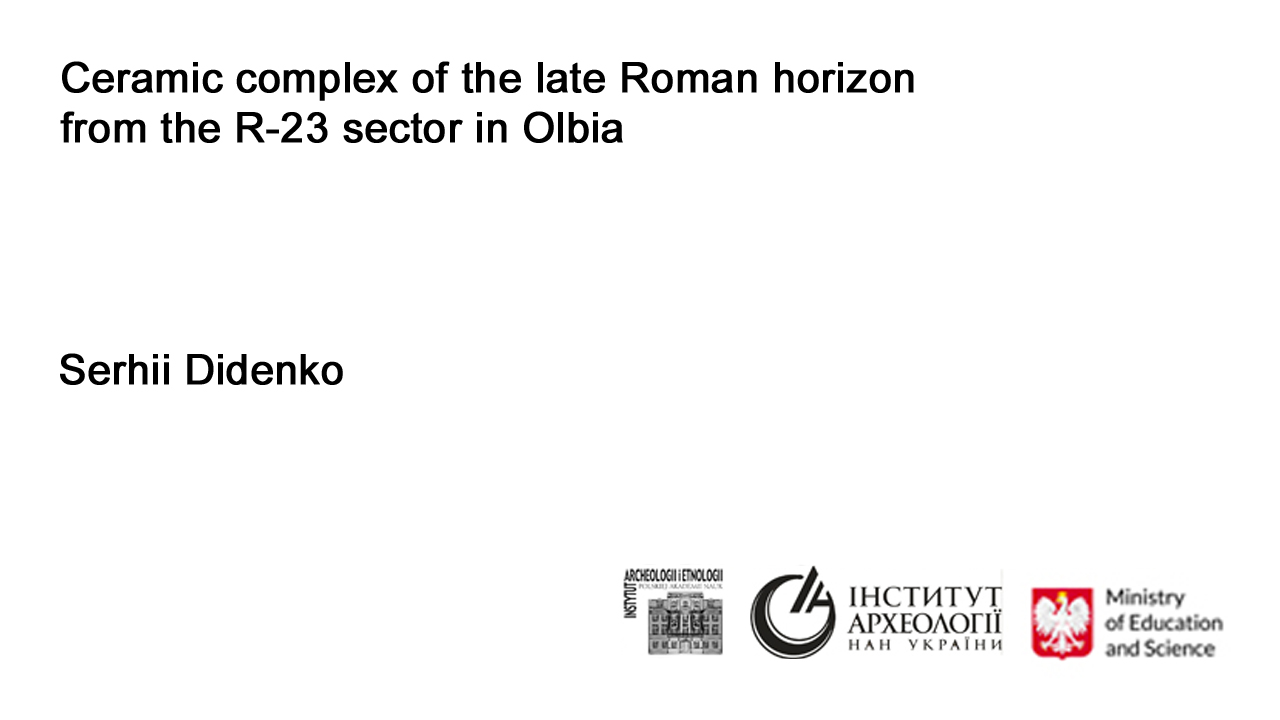
Na kanale Archeo.TV jest już dostępny 9 referat z konferencji "Olbia in Hunnic Period", która odbyła się 5-6 listopada 2021 roku ![]()
Institute of Archaeology and Ethnology of the Polish Academy of Sciences
and
Institute of Archaeology of the National Academy of Sciences of Ukraine
presents a lecture from a scientific conference:
Olbia in Hunnic Period
organized at November 5–6, 2022
Author: Serhii Didenko
Title: Ceramic complex of the late Roman horizon from the R-23 sector in Olbia
Abstract:
The excavations in 2016–2018, 2021 in the southeastern part of the Olbia citadel (sector R-23), carried out within the Ukrainian–Polish project of the Institute of Archeology of the National Academy of Sciences of Ukraine, the National Museum of Warsaw, and the Institute of Archeology and Ethnology of the Polish Academy of Sciences, revealed interesting contexts related to the latest antique layer of the site.
The Late Antique ceramic complex of this sector includes fragments of amphorae, red-slipped wares, wheel-thrown gray-clay pottery and handmade pottery dating from the 4th century AD and possibly later.
Four types of amphora containers were distinguished: 1) amphorae from Heraclea, types F and E according to D. Shelov’s typology; 2) Sinope amphorae type 100 according to I. Zeest; 3) Northern Pontic amphorae type Kharax, burial 33 according to A. Abramov; 4) Eastern Mediterranean amphorae of the LRA 1 Benghazi type according to J. Riley. There were also some amphorae from unidentified centers.
The red-slipped wares included Pontic Red Slip Ware (Domżalski forms 1, 2) and Pontic Red Slip Ware (Hayes forms 50, 67).
Wheel-thrown gray-clay pottery is subdivided into three classes: dining (bowls and vases), cooking (pots), and storage (large storage vessels). This category of the material has the closest parallels in the Chernyakhiv/Sântana de Mureș Culture, which was distributed on the territory of the Ukrainian Forest-steppe, the North-Western Black Sea region, Moldova, and Romania in the late Roman time.
Handmade pottery is represented by fragments of vessels typical for the Chernyakhiv culture. The fragment of the bowl made in the Germanic tradition deserves special attention.
A comprehensive analysis of the ceramic complex from the R-23 sector demonstrates close affinities with finds from Kiselov group sites of the Chernyakhiv culture in the territory of the North-Western Black Sea region.
Referat znajdziecie na YouTube, pod tym linkiem:


